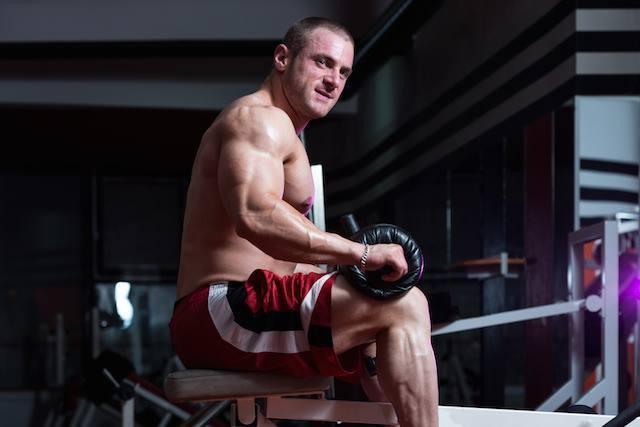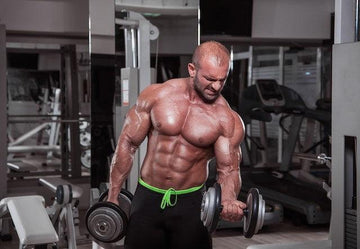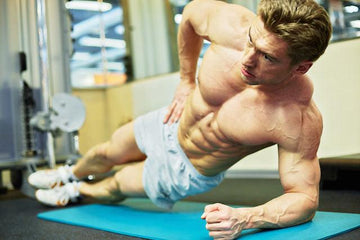

Build Bigger Calves with this Routine
Table of Contents
Target Training to Transform Your Calves by Joseph Palumbo, IFBB Pro
Do I really need to train my calves? In my opinion calves are the one muscle that can complete a physique, so yes you need to train them and unfortunately few muscle groups can be as stubborn to grow as your calves. Is calf size really genetics, absolute YES but then again all of your muscles shapes sizes and length are due to your genetics…so don’t give up just yet.
Target Training to Transform Your Calves

One of the biggest problems is neglect – calves are often neglected—or saved for the last part of a leg workout, when you’re tired and barely able to muster up the energy for a couple of half-assed sets. The first step to bigger calves is prioritizing them by working them first. As you already know, muscles can’t grow if they lack training. If you really want to make your calves stand-out, you must start training them the way you train your back or chest: fresh, from every angle, and to complete exhaustion. You have to force your calves to grow, as my relatives would say you need to make them an offer they can’t refuse.

The calf muscle, on the back of the lower leg is actually made up of two muscles: The gastrocnemius is the larger calf muscle, forming the bulge visible beneath the skin. The soleus is a powerful muscle in the back part of the lower calf. It runs from just below the knee to the heel, and vital in walking, running and standing. The soleus specifically plays an important role in maintaining standing posture; if not for its constant pull, the body would fall forward. The quest for well-developed calves zeroes in on heel raises and toe presses. This makes sense because the bulk of your lower leg muscles lie in the gastrocnemius and soleus, two muscles targeted in exercises. The soleus makes up 60% of the calf… so it’s clear that training the soleus properly would lead to the best gains in calf size and strength. Note that this muscle is a slow-twitch muscle, meaning it responds best to slow contractions and high reps, based on that, calf exercises working the soleus should be done relatively slowly. The gastrocnemius is a type II muscle, meaning it responds well to explosive contractions with low-rep and heavy weight protocol. Therefore for maximum growth you need to perform calf exercises that yield multiple variables for proper Type I & II stimulation.
SEATED CALF RAISE
STANDING CALF RAISE
CALF LEG PRESS
DONKEY RAISE
SINGLE STANDING CALF RAISE
Tibialis Raises
A much forgotten (or ignored) exercise in the bodybuilding world is the tibialis raise. Mainly reserved for runners, this movement will not only add mass to the front of the lower leg but will also help strengthen that area by developing balance to the antagonistic (opposite) area to the calf muscles.
This, in turn, will enhance the performance and reduce injury to all of the lower leg muscles resulting in a more balanced physique. Simply place your heels on a calf block and drop your feet for a stretch. Rise up (dorsi flex) on your heels while trying to point your toes to the ceiling above. No weight will be needed for this movement as you may find that this area may be a newly discovered weak point. Try not to rock back and forth – keep the form strict and feel the burn!
Training tip from the late, legendary Steve Reeves, he punctuated his calf training by pointing out that you only get a full contraction of the calf muscle if you roll forward, putting your weight right onto your big toe—which feels as if you’re turning the movement inward rather than going straight forward. The natural tendency doing calf raises is to roll outward onto the other four toes, turning your ankle as you do the movement. But when you do calf raises like this you can’t totally peak the calf muscle, which means you end up losing training intensity. Train safe, Train smart.
About the Author:
Joseph Palumbo is an IFBB Professional Bodybuilder, Certified Trainer (SMART)
Advance Sports Nutrition Specialist (ASNS) and Certified Navy Seal Fitness Instructor.
Contact info: joeswat5@aol.com
MUSCLE MEDIA MAGAZINE FOR MEN
The premier source of training, nutrition, supplements, fat loss and health for men.

















